In his DSEI 2025 address, First Sea Lord General Sir Gwyn Jenkins unveiled details of Atlantic Bastion, describing it as “a groundbreaking concept revolutionising how we protect the UK and its allies in the underwater environment.”
He said the system would “provide a formidable underwater defence posture from the Mid-Atlantic Ridge to the Norwegian Sea,” blending crewed and uncrewed host platforms in a networked but independent system. “We will have our first Bastion sensors in the water next year,” he confirmed.
Jenkins illustrated how the vision extends above the waves. “Imagine in the near future, a Type 26 Frigate goes into the North Atlantic… But it is not alone. It is sailing in company with two uncrewed escorts, who use AI to work in tandem with the warship. Together, they provide a 3 ship task group in their own right.”
These escorts, he explained, would extend the capability of the parent ship: “The escorts will protect the parent ship, adding to its sensors, weapons and decoy capabilities. Because they have no crew, the escorts are not complex vessels, they are easy to produce at scale, even easier to configure to specific mission requirements as the task demands.”
Far from being speculative, Jenkins stressed the near-term reality. “If this sounds fanciful, it is not. It is my aim to have the first of our uncrewed escort ships sailing alongside our RN warships within the next two years. We will then begin scaling across the Navy.”
He said the approach would “revolutionise our ability to put mass to sea” and transform future shipbuilding. “It will fundamentally change our future shipbuilding programme, enabling us to break the paradigm of only ever bigger, more expensive and complex warships.”
The concept, he added, would inform the design of the Multi-Role Support Ship and the future Type 83 Air Defence Destroyer. “I want both to be founded on a family of vessels, with crewed capabilities at their heart, but more modular, resilient, dispersed and powerful. Fit for modern warfighting.”



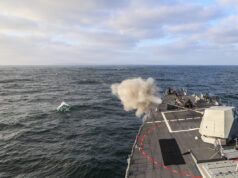
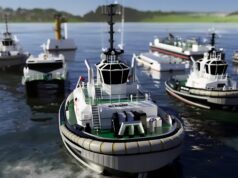
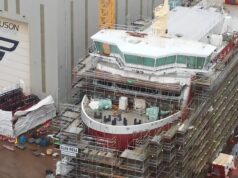
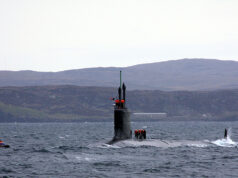
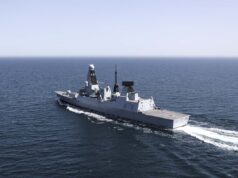

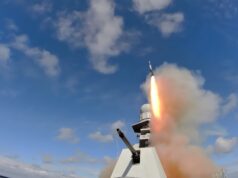
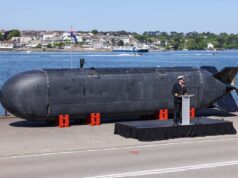
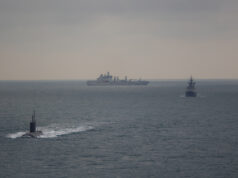
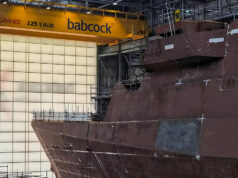

Think of the naming opportunities for all these un crewed vessels.
Ships Naming Committee will be busy.
All sounds great. I’ll believe it when I see it, have heard far too many promises from the MoD, HMG, and senior officers.
Two years for a large autonomous vessel that does not yet even exist on paper.. I would say there is sod all hope.. 5-10 years maybe.
HMS Vacant.
HMS Single platform.
HMS No mates.
HMS No hands on deck.
HMS Lost and going round in circles.
HMS Captured without a fight.
HMS Dead end.
HMS Jim’s Wife.
Too early for my brain to work properly yet.
So the current tally for DSEI naval news is:
New BAE T83 images with huge radar, 72-96mk41
New Babcock AH140 AAW variant with slightly smaller radar, 32-48mk41 + 96 CAMM (yes, really).
Commitment by 1SL to have Cabot sensors in the water by next year, and unmanned ‘escorts’ the year after that.
Collab between SEAtech and ACUA to integrate Kraitline on Pioneer, obviously aimed at Cabot
BAE productionising Herne with Cellula
Aster integration in mk41 is happening
Did I miss anything?
Unmanned “jets” on QE next year?
Sounds good, but maybe just a Banshee, and a handful.
Yes, that’s how I read it as the bar to be an ‘ACP’ seems very low at the moment. However, in the transcript of Gen. Jenkins’ speech he did say that the next Pacific CSG would have an ‘unrecognisable’ air wing, so maybe there’s something beyond that?
If not, shameless hyperbole.
What he actually meant was the RAf have told the RN they are having 1 F35B and Bob down the road for the next CBG..so it will be unrecognisable.
FC/ASW design confirmation and reveal?
Surface launched ASRAAM as well, but that’s about it I think
Just realised you said naval, apologies.
What site was the New Babcock AH140 AAW variant news from? I can’t seem to find it.
Look up Gabriele Molinelli on Twitter/X, he took the only photos I’ve found.
Hopefully we get a grand reveal tomorrow or the day after with more details.
Oh, I’m not on Twitter, so kind of forgot. Lol. Thanks.
BMT introduces new modular uncrewed ship design MODUS
Oh yes, that too.
Have BMT released more information about them, or is it just the initial concept images?
I’ve only see concept images. Google brings up a few articles on it.
This has been an inevitable direction of travel for a few years now. I’ve been shot down by so called experts on various forums for a while saying the future manned RN surface fleet will become manned multi-role mothership 12-15 Cruisers and low level OPVs/Sloops with unmanned ASW Friagtes and ASuW/arsenal Destroyers – it’s going to happen.
Ah that’s the trouble with “Forum Experts” !
I still want more crewed Frigates and Destroyers.
Christ we need more of anything. I get we’re in an alliance but lets face it, if NATO and ruzzia does go to war, it wont just be the ruzzians’ NATO will be fighting.
More troops, more tanks, more ships, more jets, more everything.
Such small vessels would not last long in the North Atlantic, it’s not a kind place to be in any vessel never mind a small unmanned hull. Sorry not a good idea at all as we will loose them easily not only due to ememy action but more so the elements. Some need to check out history, it was hell in small vesssels in WW2 and even the large hulls lost out on many occasions. The Sea needs to be respected.
Not necessarily they learned a lot of lessons from WW2 and there have been some designs which although small were designed to operate in the Atlantic and Arctic Oceans. The 2 Navy’s with the most experience were the RN and RCN and post WW2 they both designed what we would now call small Frigates (@2500 tonnes & 112m) with much better sea keaping than the wartime ones (T12 and St Laurent class).
In the late 1970’s the RCNC designed the Castle Class OPV at roughly the same size as a WW2 River class Frigate (1500 tonnes) they had to be very seaworthy, stable and faster than the Island class. David K Brown RCNC designed it with the Bridge and crew accomodation mid ships, an old fashioned Cruiser style bow knuckle, very large Bilge keels and stabilisers. By all accounts when they were sent down with the Falklands Taskforce as despatch ships, it was noticed that although overloaded they had far better sea keeping than any of the Frigates or Destroyers. Funny thing was that the stabiliser shafts had snapped on the way down and noone on board had noticed any difference. Spookily the River class OPV and its cousins are all based on that design.
As a small design it was a very flexible ship and capable of far more than it was used for by the RN (stiil in use as a Corvette by Bangladesh).
Also if you research the early design iterations that led to the T23, small sea worthy, cheap Frigate designs that had not much more than a TASS and Helicopter they were intended to replace the Leanders but then the design grew as they packed more in (shame they didn’t leave much space or weight for upgrades).
The drone vessels being pushed are muich smaller than that as we understand it so although I agree design is key the North Atlantic can easily drown a hull and take it under. Experienced of a large 20,000ton vessel with one of the best power to weight rations of any ship that has ever sailed and even on full power could make next to no headway against the North Atlantic which was no fun for us onboard I can tell you.
We will just have to weight and see I guess but dont have much faith in such as a one that has been there.
Not necessarily they learned a lot of lessons from WW2 and there have been some designs which although small were designed to operate in the Atlantic and Arctic Oceans. The 2 Navy’s with the most experience were the RN and RCN and post WW2 they both designed what we would now call small Frigates (@2500 tonnes & 112m) with much better sea keaping than the wartime ones (T12 and St Laurent class).
In the late 1970’s the RCNC designed the Castle Class OPV at roughly the same size as a WW2 River class Frigate (1500 tonnes) they had to be very seaworthy, stable and faster than the Island class. David K Brown RCNC designed it with the Bridge and crew accomodation mid ships, an old fashioned Cruiser style bow knuckle, very large Bilge keels and stabilisers. By all accounts when they were sent down with the Falklands Taskforce as despatch ships, it was noticed that although overloaded they had far better sea keeping than any of the Frigates or Destroyers. Funny thing was that the stabiliser shafts had snapped on the way down and noone on board had noticed any difference. Spookily the River class OPV and its cousins are all based on that design.
As a small design it was a very flexible ship and capable of far more than it was used for by the RN (stiil in use as a Corvette by Bangladesh).
Also if you research the early design iterations that led to the T23, small sea worthy, cheap Frigate designs that had not much more than a TASS and Helicopter they were intended to replace the Leanders but then the design grew as they packed more in (shame they didn’t leave much space or weight for upgrades).
I’m not trying to sound snarky but isn’t that the whole point of them being unnamed, so you are not in them. They can be cheap and easily replaced and don’t have to to be designed under the limitations of hosting humans on board.
The drone vessels being pushed are much smaller than that as we understand it so although I agree design is key the North Atlantic can easily drown a hull and take it under. Experienced of a large 20,000ton vessel with one of the best power to weight rations of any ship that has ever sailed and even on full power could make next to no headway against the North Atlantic which was no fun for us onboard I can tell you.
We will just have to weight and see I guess but don’t have much faith in such as a one that has been there.